Lyceum Theater
Minneapolis
This page concerns three buildings:
- 718 Hennepin Ave.
- 711 Hennepin Ave.
- 85 So. 11th STREET (at Nicollet)
They are all together on this page because they have each had one of these theater names and other venues:
- Hennepin Avenue Theater
- Harris Theater
- Lyceum Theater
- Lyric Theater
- Blue Mouse Theater
- Skyway Theater
- Minneapolis Recreation
I know this is going to be confusing, but they kept moving names from one building to another, and this is the best I could do. I’ve named the page the Lyceum because of the confines of the web program, but hopefully a search will bring up the others.
I’ve also spelled each one “Theater” instead of “Theatre” to help with searching.
In their early days, these venues hosted plays, concerts, musical comedies, light opera, and live accompaniment to silent movies. Each of these venues no longer exist.
718 HENNEPIN (714-722)
HENNEPIN AVENUE THEATER: 1887 – 1889
This theater opened on September 19, 1887, with Booth and Barrett in “Julius Caesar.” The Gates Brothers were the builders and proprietors, and they leased it to Sackett and Wiggins to manage, the latter having been the proprietors of a successful dime museum for the last ten years. Minneapolis Tribune, December 1, 1907). It had seating for 1,692. Edgar described this theater as an “attractive East Indian playhouse near Seventh Street.”
By February 1888 the theater was deep in debt and its lawyer was facing jail for operating without a license. By March it was all over and the court ordered its principals to sell the theater at auction. Wrangling by the creditors kept the theater dark until Christmas, when it was opened for a few special performances. By then it needed work.
HARRIS THEATER: May 22, 1889 – August 1890
Impressario Pat Harris came in to try to put the theater to rights. But he killed himself. So that name didn’t last long. The new owners took suggestions for a new name. The theater was managed for a time by George H. Broadhurst, who later wrote “The Man of the Hour” and “Paid in Full.” (Minneapolis Music Report)
LYCEUM: August 1890 – 1908
In August 1890 the building was purchased by the Minneapolis Syndicate, and managed by J.F. Conklin. It was known as the Western home of light opera, and also presented lectures and concerts. In 1908 the Lyceum name ?? until 1924 when it was given to a refurbished Auditorium building at 85 So. 11th Street.
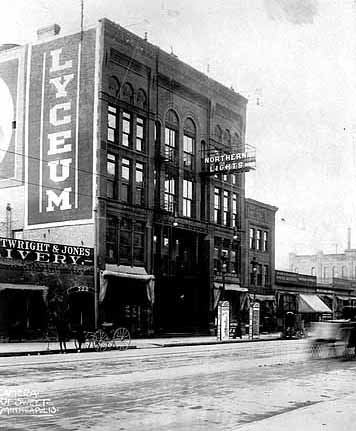
LYRIC: 1908 – 1922
On September 21, 1908, the Lyceum was remodeled and renamed the Lyric Theater. The biggest theater sign in the city was erected, with 1,489 bulbs.
From 1912 to 1915 it was advertised in the papers as Saxe’s Lyric. Photos below courtesy Minnesota Historical Society.
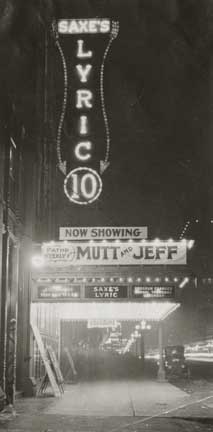
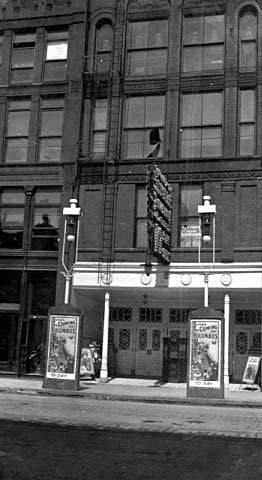
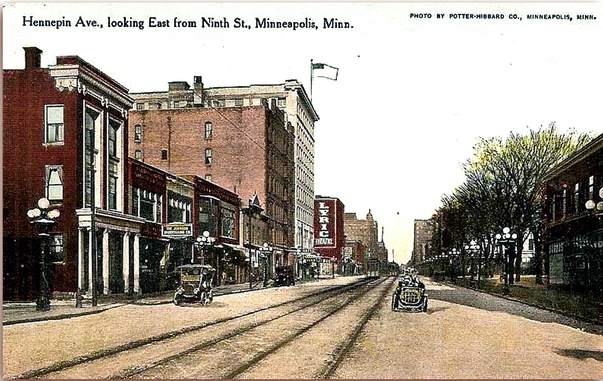
The last play at the Lyric was “The Beggar’s Opera,” performed on February 9, 1922.
In 1923 the name of the of the theater was transferred across the street to 711 Hennepin Ave. (see below). Location was largely responsible for the Hennepin -Harrris-Lyceum-Lyric’s lack of popularity. It was almost necessary to carry a lantern to find the theater during its 20 years of its existence, and by the time Minneapolis had grown until its rialto included the property, the whole building was falling to pieces. (Edgar)
MINNEAPOLIS REC
On August 7, 1924, Samuel Sumner Snyder opened the Minneapolis Recreation Center opened in the shell of the old Lyric building. Only the side walls were retained.
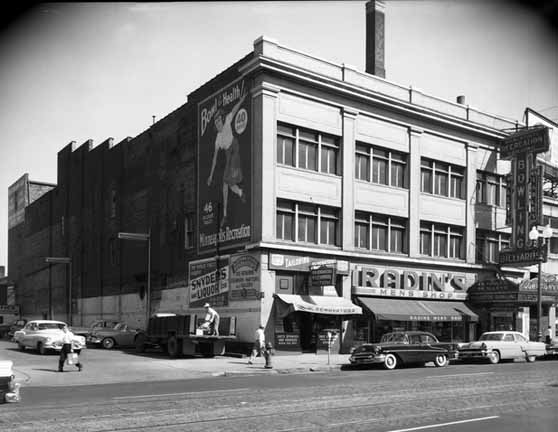
All four floors were dedicated to an amazing:
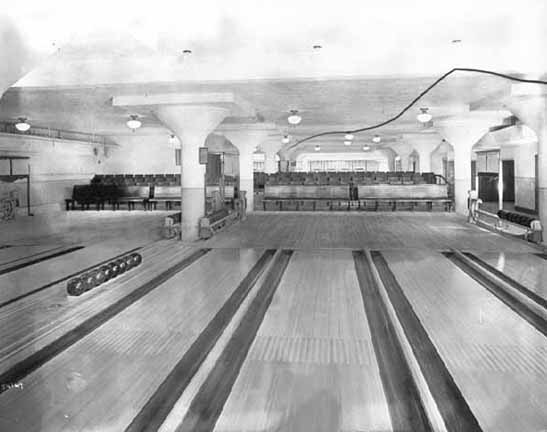
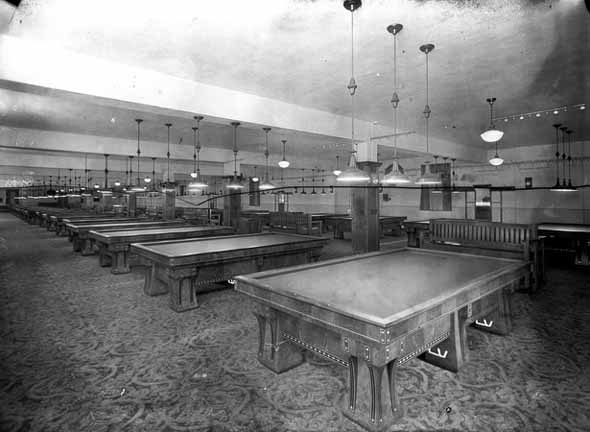
DEMOLITION
Snyder discontinued Minneapolis Rec in June 1959 when he could not negotiate a lease, and he died in 1960. There was an ad for Midtown Rec, which tried to open for bowling in the building in August 1959, but a permit for demolition was issued on December 29, 1960. The site is now a parking lot west of the Pantages Theater.
711 HENNEPIN
BLUE MOUSE: 1920 – 1923
From Bryan Krefft, Cinema Treasures.org:
The unusually-named Blue Mouse Theater opened in 1920 after more than a year of construction at a cost of around a quarter million dollars. This downtown Minneapolis house could seat around 1,500 in its elegantly decorated auditorium and contained a marble staircase in its lobby.
Its facade was decorated in white terra-cotta done in a Neo-Gothic style, and rose a full three stories over Hennepin Avenue.
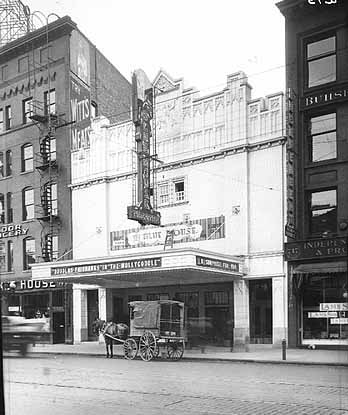
LYRIC 1923 – 1970
The Blue Mouse was renamed the Lyric Theater on June 23, 1923, after the older theater of the same name directly across the street from the Blue Mouse Theater had closed.
For most of its existence, the Lyric Theater was a second-run house, playing films after they had had long runs as the larger houses like the Minnesota Theater or the State Theater, just up the street.
In the late 1950s, the Lyric Theater started to play roadshow films, with reserved seating, starting with the epic “The Ten Commandments” in 1957. This film, and a handful of others afterwards, would have decent runs, but only mediocre grosses compared to many other roadshow houses in the Twin Cities.
By the 1960s, it went back to second-run films.
On February 6, 1970, it was announced that the Lyric would be demolished and replaced by a new Lyric theater in the same location. It would also include:
- The area occupied by the El Morocco Bar at 725 Hennepin, which was demolished by September 1970, and
- The Lincoln Recreation Parlors at 721 Hennepin, which had been in business for 45 years, demolished in March 1969.
On April 24, 1970, the Lyric began screening the film “A Man Called Horse.” The American Indian Movement, led by Clyde Bellecourt, protested the movie, saying that the makers “totally humiliate and degrade an entire Indian nation, make sure all Indians are savage, cruel, and ignorant, make a white man become an Indian hero, and desecrate the Indian religion, among other things.” Especially galling was the casting of a former Miss Greece as the Indian princess.
About 100 people picketed the theater, and one woman was arrested for refusing to move on. Producer Sandy Howard actually came to Minneapolis to meet with the members of AIM and other protesters. Will Jones described the session as a standoff.
The last movie shown appears to be “Rio Lobo,” shown during the week of January 20, 1971.
SKYWAY THEATER
Originally to be called the Lyric Twin, ground was broken for this double theater/retail/office complex on May 15, 1971. Among those present was the obligatory set of twins and Miss Downtown.
The Skyway officially opened on October 3, 1972. One Facebook comment was:
The original 1 and 2 theaters were great. But number 3 down the hall [1975] and especially 4 on street level really sucked with their low ceilings and lousy sound and sightlines. When they split up the two original theaters to form 5 and 6, Skyway really went downhill.
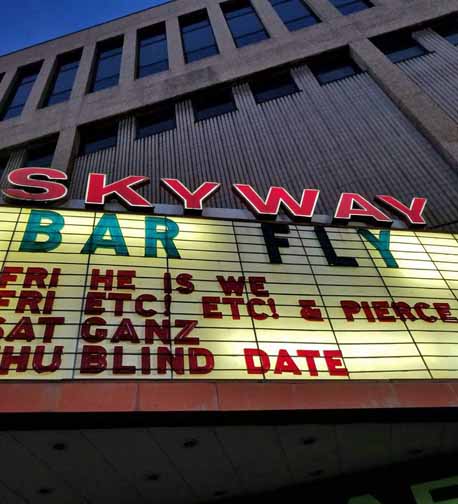
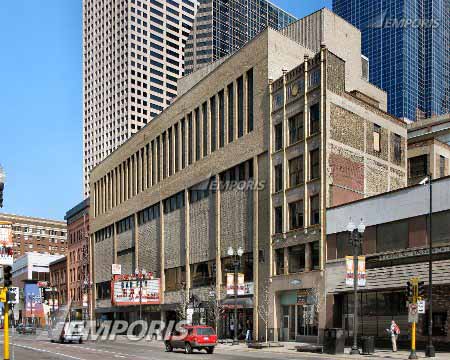
At some point the movie theaters were discontinued and turned into five music venues: Skyway Theater Main Room, Studio B, The Loft, and The Lyric, and Bar Fly.
85 So. 11th STREET (at Nicollet):
MINNEAPOLIS AUDITORIUM: 1905 – 1924
The Minneapolis Auditorium was built by the Northwest Life Insurance Co., and modeled after Symphony Hall in Boston.
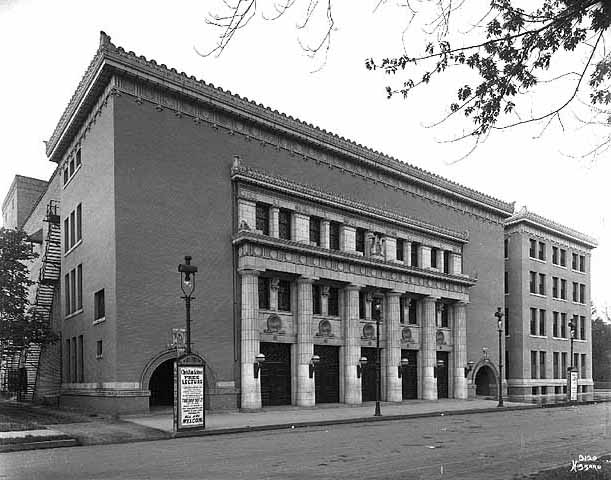
NEW LYCEUM: 1924 – 1958
The New Lyceum was a remodel of the old Auditorium. It opened on October 26, 1924. It featured a movie house with first-run features on the first floor, and a ballroom with a jazz orchestra for dancing on the second floor. The third floor had an additional dance floor and tea room, and the fourth floor had a “Little Theater” for rehearsals. The new Lyceum also became the home of the Minneapolis Symphony Orchestra, which began its Friday night series in 1903. The building operated as a theater for movies and legitimate theater until 1958, with Benjamin N. Berger as the lease holder for the last five years.
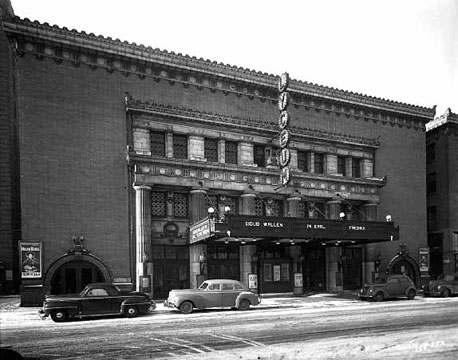
SOUL’S HARBOR
On August 15, 1958, the building was purchased by the Soul’s Harbor religious organization. Soul’s Harbor (Calvary Temple) first came to Minneapolis in February 1946 with nine members, but grew rapidly. By 1947 they had a church established at 5th Ave. and 10th Street So. Sermons were broadcast over radio stations WDGY and KEYD, and in February 1960 they became one of the first churches to have a regular television program, on WTCN-TV. The church planned to spend $75,000 to convert the building into a church, classrooms, and gymnasium.
In 1973 Soul’s Harbor moved to Regina High School in South Minneapolis temporarily.
ORCHESTRA HALL
On July 14, 1973, the building was razed to make way for Orchestra Hall.


